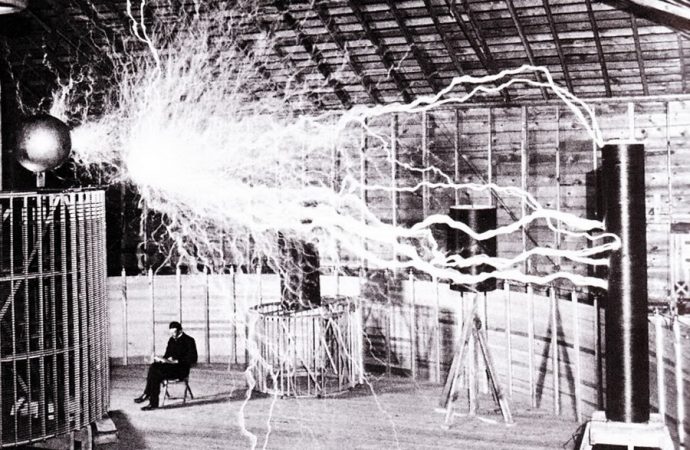Nikola Tesla gave us the electric motor, long-distance electricity transmission, radio, robots, and remote control – the very foundations of our modern economy.
Perhaps less well known is that he also was a clean-energy pioneer, and he remains an inspiration to today’s solar and battery entrepreneurs, including Elon Musk, who views him as a hero and contributed $1 million to help restore Tesla’s laboratory on Long Island.
Tesla marked his clean-energy leadership with a 1900 article in The Century – then the nation’s largest-circulation periodical. Published 118 years ago, “The Problem of Increasing Human Energy, with Special References to the Harnessing of the Sun’s Energy” was one of the earliest, detailed looks at capturing power from the sun and wind.
At his core, Tesla appreciated efficiency and hated energy waste, complaining that we “do not utilize more than 2 percent of coal’s energy” to make electricity. “The man who should stop this senseless waste would be a great benefactor of humanity,” he declared.
Tesla, of course, thought big, sometimes unreasonably so. One of his grander proposals was to send artificial lightning into the ground, take advantage of the planet’s electric charge, and prompt resonance in order to allow everyone around the world to plug into the earth and obtain essentially free electricity.
As the world faces major challenges – from climate change to pervasive poverty, Tesla, who died 75 years ago, remains particularly relevant. We need inventors — people willing and able to see the world differently — and Tesla epitomizes the inventive spirit. Commenting on the excitement of discovery, he wrote: “I do not think there is any thrill that can go through the human heart like that felt by the inventor as he sees some creation of the brain unfolding to success. Such emotions make a man forget food, sleep, friends, love, everything.”
While most of today’s innovations are developed by teams within universities, federal laboratories and corporate research centers, Tesla demonstrated the power of what he called cerebral engineering. He claimed to be able to visualize inventions in his head, where he would test alternative configurations, and he claimed, with some exaggeration, that he could “give exact measurements to the workmen without having made even a sketch.” He envisioned his revolutionary electric motor, for instance, while walking through a Budapest park and quoting Goethe’s Faust.
While Thomas Edison the entrepreneur developed new products in order to make money, Tesla – although he certainly enjoyed his lavish meals at Delmonico’s and his fancy room at the Waldorf Astoria — believed that technology transcended the marketplace and that invention should not just be tied to profits. He wrote: “The desire that guides me in all I do is the desire to harness the forces of nature to the service of mankind.”
Tesla, as noted before, gave us motors, robots, and radio, but he kept imagining. Many of his designs – including sonar, smart watches, and death rays – would inspire great minds for generations.
Noting today’s risk- and innovation-averse electricity industry, we could benefit greatly from Tesla’s selfless, out-of-the-box thinking. He’d probably be envisioning ways to send power wirelessly, to generate it without pollution, and to provide drudgery-reducing energy to everyone, including the two billion people around the world still without access to electricity.
No doubt Tesla aimed high, perhaps higher than any other inventor. He worked tirelessly to offer electric power freely to the world and to build robots that would reduce life’s drudgery. He was, in short, driven by inner forces that made sheer creation the most important thing in his life. And we are the better for it.
Source: Energy News

































Leave a Comment
You must be logged in to post a comment.